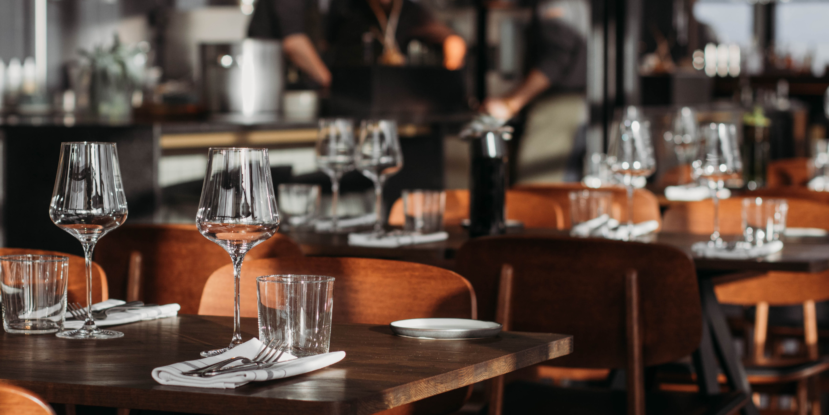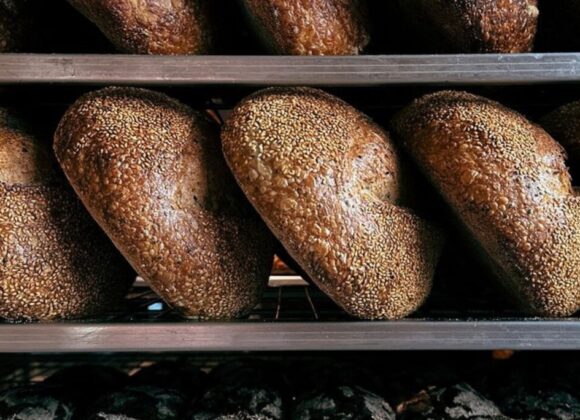Jednym z największych wyzwań, przed którymi stają właściciele restauracji, jest skuteczne zarządzanie kosztami. W obliczu konkurencyjnego środowiska gastronomicznego, utrzymanie równowagi między jakością usług a kontrolą nad wydatkami staje się kluczowym elementem sukcesu. W tym artykule omówię kluczowe strategie, które pomogą restauratorom zoptymalizować koszty surowca, personelu i operacyjne, aby osiągnąć stabilność finansową i długoterminowy sukces w biznesie gastronomicznym.
Optymalizacja Kosztów Surowca
Jednym z największych wyzwań dla restauracji jest zarządzanie kosztami surowca. Składniki potraw stanowią znaczący koszt w każdym lokalu gastronomicznym, dlatego kluczowe jest ich racjonalne wykorzystanie.
- Negocjacje z Dostawcami: Regularne negocjacje umów handlowych pozwalają na uzyskanie korzystniejszych warunków zakupu surowców, co przekłada się na obniżenie kosztów.
Przykładowo: uzyskanie korzystniejszych warunków zakupu mięsa od lokalnego dostawcy może przynieść oszczędności nawet do 10% w skali roku.
- Optymalizacja Menu: Analiza popularności dań pozwala na dostosowanie oferty do preferencji klientów, eliminując mniej opłacalne pozycje i minimalizując marnotrawstwo.
Przykładowo: rezygnacja z rzadko zamawianych dań może pomóc w zmniejszeniu marnotrawstwa i zwiększeniu marży.
- Kontrola Porcji: Standaryzacja wielkości porcji pomaga w ograniczeniu nadmiernego zużycia surowców i zmniejszeniu kosztów.
Skuteczne Zarządzanie Kosztami Personelu
Koszty zatrudnienia personelu stanowią znaczący udział w budżecie restauracji. Odpowiednie zarządzanie personelem może przynieść znaczne oszczędności.
- Optymalizacja Grafiku: Planowanie grafików pracy w sposób efektywny pozwala uniknąć nadmiernych kosztów związanych z nadgodzinami i niepotrzebnym zatrudnieniem.
- Szkolenia i Rozwój: Inwestowanie w rozwój personelu przekłada się na zwiększoną wydajność pracy i lojalność pracowników. Dodatkowo szkolenia personelu, takie jak z zakresu obsługi gościa czy technik sprzedaży, rozwiązywanie reklamacji przekłada się na zwiększoną wydajność pracy i lojalność pracowników. Dobrze przeszkolony personel może sprawniej i poprawniej obsługiwać gości, co wpływa na zwiększenie średniego rachunku co za tym idzie i całego obrotu restauracji.
- Motywacja i Nagrody: Systemy motywacyjne mogą stymulować pracowników do osiągania lepszych wyników, co przekłada się na lepsze zarządzanie kosztami. Wprowadzenie programu nagród za osiągnięcie wyznaczonych celów sprzedażowych może przyczynić się do zwiększenia przychodów.
Skuteczne Zarządzanie Kosztami Operacyjnymi
Oprócz kosztów surowca i personelu, restauratorzy muszą również zwracać uwagę na inne koszty operacyjne, takie jak czynsz, media czy marketing.
- Negocjacje Umów: Regularne przeglądy umów z dostawcami usług oraz najmem mogą prowadzić do znaczących oszczędności.
- Oszczędność Energii: Inwestycje w technologie energooszczędne pozwalają na obniżenie kosztów związanych z mediami. Zainwestowanie w technologie energooszczędne, takie jak LEDowe oświetlenie czy urządzenia kuchenne o niskim zużyciu energii, mogą obniżyć koszty operacyjne restauracji. Przykładowo, wymiana wszystkich żarówek na energooszczędne może przynieść oszczędności nawet do 30% w skali roku.
- Zarządzanie Konserwacją: Regularna konserwacja sprzętu minimalizuje ryzyko nieplanowanych napraw.
Marcin Dyrda, Founder & CEO of GASTROWIEDZA, ekspert i praktyk gastronomiczny specjalizujący się w zarządzaniu i otwieraniu obiektów gastronomicznych. Moje doświadczenie pozwala mi stwierdzić, że „Jeżeli nie możesz czegoś policzyć, nie możesz tym zarządzać”.
Kluczowe Wskaźniki Finansowe
Monitorowanie kluczowych wskaźników finansowych jest niezwykle istotne dla skutecznego zarządzania kosztami w restauracji. Pozwala to restauratorom na śledzenie efektywności operacyjnej, identyfikację obszarów wymagających poprawy oraz podejmowanie świadomych decyzji biznesowych. Poniżej przedstawiamy kluczowe wskaźniki oraz ich optymalne wartości, którymi warto się kierować przy zarządzaniu kosztami w restauracji:
- Food Cost Percentage (FCP):
- Idealne FCP wynosi od 25% do 35%.
- FCP to stosunek kosztów surowców do całkowitej sprzedaży. Wysokie FCP może świadczyć o złym zarządzaniu gospodarką magazynową, marnotrawstwem lub dużym kosztem wytworzenia dań (pozycji menu) .
- Labor Cost Percentage (LCP):
- Optymalne LCP to około 30%-35%.
- LCP określa procent kosztów związanych z wynagrodzeniami pracowników w stosunku do całkowitej sprzedaży. Wysokie LCP może wskazywać na nieefektywne planowanie grafików pracy lub niewydajność personelu.
- Prime Cost:
- Prime Cost powinien stanowić nie więcej niż 60%-70% całkowitej sprzedaży.
- Prime Cost to suma kosztów surowców spożywczych i kosztów pracy. Jego kontrola jest kluczowa dla utrzymania odpowiedniej marży brutto i zapewnienia zyskowności restauracji.
- Break-even Point (BEP):
- Znajomość BEP pozwala na lepsze planowanie strategii cenowych i marketingowych.
- BEP to punkt, w którym koszty operacyjne są równoważone przez przychody ze sprzedaży, co oznacza brak zysku ani straty. Świadomość BEP umożliwia restauratorom lepsze planowanie działalności i podejmowanie decyzji dotyczących cen i promocji.
Monitorowanie tych kluczowych wskaźników finansowych pozwala restauratorom na skuteczne zarządzanie kosztami, optymalizację działalności oraz osiągnięcie długoterminowego sukcesu w konkurencyjnym środowisku gastronomicznym.
Skuteczne zarządzanie kosztami w restauracji wymaga systematycznego podejścia i ciągłej analizy. Optymalizacja kosztów surowca, personelu i operacyjnych jest kluczowa dla utrzymania stabilności finansowej przedsiębiorstwa. Przyjęcie strategii opartych na efektywności może przyczynić się do osiągnięcia sukcesu w konkurencyjnym środowisku gastronomicznym.










 Młodszy specjalista ds. komunikacji marketingowej i PR.
Młodszy specjalista ds. komunikacji marketingowej i PR.


 Absolwent Uniwersytetu Warszawskiego oraz Szkoły Głównej Gospodarstwa Wiejskiego. W branży HoReCa od ponad 10 lat. Przez lata związany z Grupą Trip, Sobienie Królewskie Golf and Country Club oraz restauracją Florentin w Warszawe.
Absolwent Uniwersytetu Warszawskiego oraz Szkoły Głównej Gospodarstwa Wiejskiego. W branży HoReCa od ponad 10 lat. Przez lata związany z Grupą Trip, Sobienie Królewskie Golf and Country Club oraz restauracją Florentin w Warszawe. Absolwentka Wydziału Architektury Politechniki Warszawskiej na kierunku Architecture for Society of Knowledge oraz Komunikacji Wizualnej na Politecnico di Milano. Specjalistka od budowania nastroju. Doświadczenie zdobywała w kraju i zagranicą podczas licznych warsztatów międzynarodowych (Sevilla, Lizbona, Florencja), stypendium na La Sapienza (Rzym) oraz pracując m.in. w Carmi e Ubertis i ADM Milano.
Absolwentka Wydziału Architektury Politechniki Warszawskiej na kierunku Architecture for Society of Knowledge oraz Komunikacji Wizualnej na Politecnico di Milano. Specjalistka od budowania nastroju. Doświadczenie zdobywała w kraju i zagranicą podczas licznych warsztatów międzynarodowych (Sevilla, Lizbona, Florencja), stypendium na La Sapienza (Rzym) oraz pracując m.in. w Carmi e Ubertis i ADM Milano.








 Menedżer z wieloletnim doświadczeniem w branżach kosmetycznej, spożywczej, dziecięcej. W trakcie swojej kariery związany z firmami takimi jak: L’Oreal, Samsung, Danone-Nutricia, Unilever. W ciągu swojego życia zawodowego odpowiadał między innymi za rozwój sprzedaży i contentu eCommerce w Polsce i krajach Europy Środkowo-Wschodniej.
Menedżer z wieloletnim doświadczeniem w branżach kosmetycznej, spożywczej, dziecięcej. W trakcie swojej kariery związany z firmami takimi jak: L’Oreal, Samsung, Danone-Nutricia, Unilever. W ciągu swojego życia zawodowego odpowiadał między innymi za rozwój sprzedaży i contentu eCommerce w Polsce i krajach Europy Środkowo-Wschodniej. 

























































